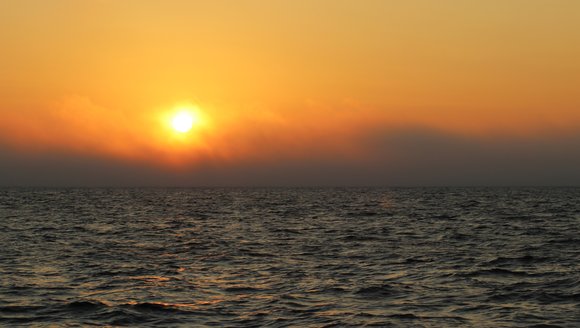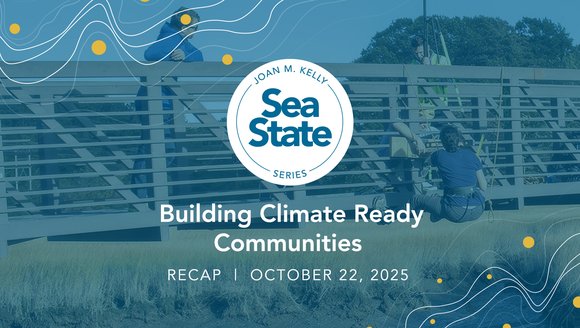Surface to Seafloor: GMRI Researchers Lead Ecosystem Survey
Perspectives | Dec 31, 2016
Most of us only get to experience the ocean as it appears to us on the surface. As for what’s below, that’s always been part of the mystery of the sea. It’s inspired songs, paintings, and novels — and it inspires science too.
For the last three years, researchers from GMRI and elsewhere have conducted an ecosystem survey that explores the connections between what we see at the surface and what’s happening below.
The Gulf of Maine Coastal Ecosystem Survey (GOMCES) is an integrated project that brings together researchers and managers from multiple organizations, universities, and agencies to map the biodiversity in the Gulf of Maine coastal region.
Most scientists recognize that species don’t exist alone in a vacuum. Still, few studies in the region have translated this prior understanding into a truly integrated research project. GOMCES attempts to meet this challenge. This survey takes a surface-to-seafloor approach — assembling experts who study everything from plankton to marine birds.
The group hopes to understand how key species are distributed and how abundant they are. Beyond that, the study also explores how these species relate to their environment and to each other. This ecosystem-level understanding is critical if we hope to understand how environmental disturbances, such as climate change, might affect the ecosystem in the future.
The team of researchers focuses on the nearshore waters, ranging 2-150 meters of depth. Over the years, GMRI has played a key leadership role in the project, from survey design, to data collection and analysis. This year, the team of researchers enjoyed success across all three major research themes within GOMCES. Below, you can learn more about each theme directly from GMRI scientists.
Marine Bird & Mammal Ecology
Whales, terns, seals, petrels, and more are under the purview of this segment of the study. The team monitors changes to the location, population density, and nesting/breeding habits of the birds and mammals that rely on the sea. Currently, GMRI staff member Andrew Allyn and Aly McKnight from the University of Maine have the honor of manning these observations over the course of the survey.
Staff perspective: Andrew Allyn
“During a normal species-specific study, we might collect data on the distribution and abundance of birds. Automatically, you start wondering, ‘Why are they here?’ And normally, that’s where it ends, because you don’t have data on the rest of the ecosystem. With this survey, we can just go to the pilot house and check out what is going on with the fish by looking at the acoustics. We can then check with the biological oceanographer to find out what’s going on with the zooplankton activity. Finally, we have the physical oceanographic measures, such as temperature and salinity, to evaluate how those drivers influence the patterns we observe. Ultimately, this allows us to paint a picture of the whole ecosystem — the relationships among species and their physical environment.”
Biological Oceanography
One of the goals of GOMCES is to characterize the physical characteristics of the water column, such as temperature and salinity. Further investigation of the planktonic community will reveal the distribution and abundances of numerous zooplankton species. These minute animals are essential for transferring energy up the food web from phytoplankton to fish. GMRI/UMaine staff Dr. Jeff Runge and Cameron Thompson spearhead this portion of GOMCES.
“Nutrient-rich waters make the nearshore region of the Gulf of Maine incredibly productive, which supports an abundance of phytoplankton. Even so, these surveys show us that these plankton communities aren’t uniform. Each region along the coast is characterized by its unique physical oceanography. Those unique characteristics influence what species thrive in those waters, and this survey helps us understand these relationships.”
— Cameron Thompson, Research Associate
Fisheries Acoustics
Another important measurement of biodiversity is the distribution and abundance of fish. GOMCES uses multiple frequency acoustics — which you can think of as fancy fish finders — to establish these. Given our expertise in using acoustics to track herring and now shrimp in nearshore waters, GMRI is responsible for this portion of the survey. Dr. Graham Sherwood and Julek Chawarski lead this component.
“I get really excited comparing my findings in real time to plankton samples and surface observations. I can only glean so much from my acoustics data, which is why that full picture is so important. On the GOMCES cruise, we can fill in the gaps in each other’s specific area of research, and that helps us imagine new and interesting questions to investigate with science.”
— Julek Chawarski, Research Technician
For a list of all project partners, and more on GOMCES, visit their blog: https://gomces.wordpress.com/



